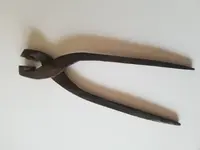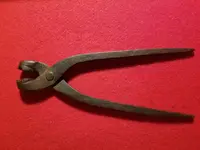BenVa68
Hero Member
- Joined
- Mar 9, 2018
- Messages
- 504
- Reaction score
- 1,731
- Golden Thread
- 0
- Location
- Hopewell va.
- Detector(s) used
- Technetics T2+ Equinox 800
- Primary Interest:
- Metal Detecting
My wife bought this for me at an antique shop in Buchanan Va. It looks to be hand forged and best I can tell using my calipers it is .36 cal. Any ideas on itts age and the weapon it may have been used with would be greatly appreciated.





